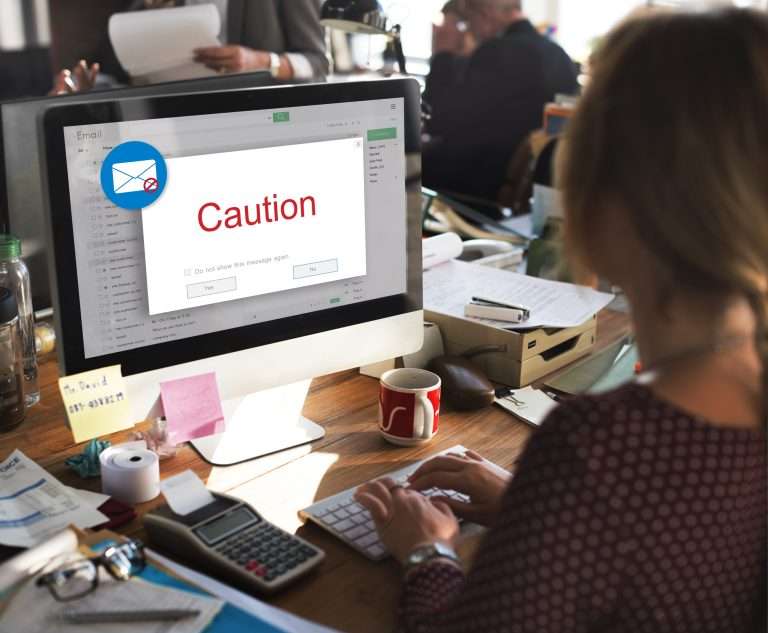Oh first let me start off by saying…AHHHHHH!!! I’ll get to the first track in a second, but first let me vent…
So we didn’t print our confirmations. One, because I have OCD and do print EVERY time and we NEVER need it. Of course, this time we did need it. So we headed back up to the room, grabbed our laptops and headed to the Marriott Business Center for printing.
First, my computer wouldn’t connect so I just issued their system to hop online. Its 69 cents a minute and I spent the first 4 troubleshooting why I couldn’t get online. After discovering that the genius before me had unplugged the networking cables, I quickly fixed and continued to download what I needed.
Once finding, I simply selected print to print 2 pages needed at 99 cents a page for printing fees. Well, the same genius before me who unplugged the networking cables must have scheduled a bunch of items in the queue to print too because my total bill managed to sky rocket to $60 for my $1 per page printing costs that bozo before me didn’t incur. Oh dear. I was not having it and the Marriott quickly issued a refund – fhew.
Now we were back on our way to scan the codes we so inconveniently had to print out. NO WAY. You could have typed in the badge number?!!! They didn’t tell us that! We wasted how much time!!!? Nevermind. Let’s just get down to learning…
Day 1
Track1: Introduction To Search Engine Marketing
Panel Members:
Danny Sullivan of Search Engine Startegies was on his own this time!
First session at SES this year was, well, solidifying. I originally sat down in the “Public relations Train Wrecks in the Interactive Biz: Disaster Can Be Avoided!” track, however, soon I realized I was out of my element. This was a class for journalists. It didn’t really focus on the SEO point of view, so I hopped on over to “Introduction To Search Engine Marketing” just to see Danny Sullivan.
Oh how validating it is to now know who he is. I was leaving the class today and overheard a couple chatting about the classes they attended. In response to a query of how his first track was, the gentleman responded with, “It was just the basic one with that one guy speaking.” They struggled to think of his name for the remaining duration of the walk down to the end of the hall so I turned around with a smile and said, “I think hat may be Danny Sullivan you’re thinking of.”
“Ah-ha” they said, thanking me for my help. Little did they know it was just 3 years ago when Angie and myself joined Advanced Access at SES where I overheard Kristi say, “Oh look, its Danny Sullivan” in the Marriott restaurant. To which I replied, “Who’s Danny Sullivan?”
The looks said it all. Not dirty looks, just um “did she really just say that looks.” LOL. Gimme a break guys, it’s my first time. I’m new to this SEO thing. I didn’t know he was the Zen master of search marketing 🙂
Anyway, it feels right to be here this year. So sitting down to listen to him pretty much just confirmed that Cal Coast was on the right path. First he started off with the types of search engine marketing (remember this is a conference about search engines so its not just about Organic SEO). So we are reminded that here are several ways to get “found” on the web. Search Engine PR (Organic SEO), Search advertising (paid listings), and Search Marketing (a combination of the two).
So first we got into organic SEO. I thought it was great when Danny said, “Want guarantees? Buy an ad.” So many business owners are looking for guarantees; and are often times turned off by SEO when one can’t be given. There are never guarantees in SEO. Search engines can and WILL index what they want!
Danny pretty much touched base on the 3 main components of SEO…metas, content and links! So the first step in Organic SEO was to gather keywords. Ill get into that in detail in my next blog posting, but for now, you can find some neat tools Danny Sullivan offers reviews and links for regarding Search Marketing Tools.
Now let’s talk about content. Once you discover your keywords to target, you must have good content to supplement it. It must be readable content. Can you copy and paste it? Is it TEXT? In a perfect world, each one of your “clusters” of related search terms would be implemented on a landing page with real content for those terms.
Remember to target “long tail terms” or terms that are less popular but the user is further along in their search and ready to take action. Your conversion rates are better this way.
So submitting to crawlers still isn’t necessary. Why all the submission tools??? Crawlers are designed to find your site. If you’ve built the site appropriately, then they will find you on their own. They especially like pages with links pointing to them. It sort of validates the site as quality. Submitting may speed it up, but isn’t certain. For “general” pages like your homage and in-between pages, go ahead and submit to Google or Live. If you are deep indexing products, use your Google Sitemap.
Back to the content…looking at a page, what terms do you think that page was meant for? Are you actually using those words in the content and the metas? Remember text in graphics is not found and alt tags don’t do enough! Same with Flash, so many people say that an alt tag is enough to make that image validated for a search term. So many other designers will tell you Flash is great and new and exciting and search engines are on the verge of learning to read it and index sites that have it. Here’s the news guys…if they were going to , they would have by now. They have the technology. Why not use it? They don’t want to!!!!
Instead, be creative with you html and tags. CSS is the way to go! Eliminate the code bloat folks!
Speaking of tags, lets get back to the head tags. The title tag is your “secret weapon.” This and your description must include instances of your primary keyword. For all you SEO newbies out there, Danny recommend 5-13 words for a title tag but reminds us that there is no official rule. If you want to see how many characters you can really have, visit a porn site, he suggests. Ewwwww…LOL!
So just a reminder too that only Yahoo still uses the actual keyword tag itself.
Here are a couple other tips to remember…
– The noodp tag: tells search engines to use site content or page descriptions as indexing text rather than the Dmoz description.
– Robots.txt file: there’s no need for robots no follow, no index tags on individual pages anymore. Or, index for that matter. Use a robotos.txt file that the spiders search for to tell them how to navigate the site!
– Design: BIG DUMB UGLY unframed pages always win 🙂 Well, at least in ranking organically. They may not keep your visitors there though. LOL.
Danny provided us with an excellent metaphor on the topic. Search engines are like radio advertising. You can’t see images (or else it would be T.V.) so you are required to present your products and services in a way that is audibly enticing. Read your text out lout. Does it replace the image that would have shown such things?
He also reminds us that as designers, we optimize for all the browsers. (Here’s a list of usage stats for browsers too. I’m always looking to show people these stats…
Internet Explorer 85.03%
Firefox 9.75%
Safari 3.13 %
Netscape 1.06 %
Opera .53%
Mozilla .37%
Other .12%
But remember as SEO-ers, our third major browser to be optimizing for is THE SEARCH ENGINES. Take a flash page for example. Grab the URL. Now go to Google and type in cahce:insertpageurlhere. What happens? That shows you what Google sees. If it’s flash, you probably see nothing but your background.
After all the meta and content reminders, Danny spoke about linking. Linking is so valued to the search engines because it’s a way to validate search terms and value or a website. Modifying the content of yours site is easy. You can do it any time and anywhere. Manipulating links is a whole other story. Remember Cal Coasts infamous High School linking metaphor found at, well its along the same lines.
It’s about more than just numbers. Lots of links can be great but a few quality links can be more valuable than a whole bunch of random links. Gov, Edu and Org sites are all generally trusted sites in the view of a search engine. Context is also important. What are the phrases linking to you? Do they include your main keywords? Is the text that surrounds your link on another website related to your site?
So now we need to go find those valuable links. Where do I do that and how do I get them to link? It’s simple. Heeheehee. Take the terms you want to rank for and type them into a search engine. I know what you’re thinking…but those are my competition!!! Not all of them are. If you offer purses, there may be a fashion blog or purse review website in the top. Get yourself on it. Or search for industry related sites where the content may include your terms but is not your direct competition.
How do you get included? You schmooze them with wonderful praise about their site. Why else would you want to be on it. You wouldn’t if you didn’t like what you saw. Next, remind them of the value. What can you offer their visitors? Next, make it easy for them. Make sure to already have their site added, provide all necessary linking information and perhaps even where it can be added for convenience (I saw a review page on your site and was hoping to be added). Offer anything from content and testimonials to actually taking care of adding it to their site if needed.
So often you hear us saying have “quality” sites link to you. So how do you tell if it is? Well first, would you buy from it? Do you like it? If not, stay away 🙂 Another tool that Google uses is the Page rank tool. FYI – Did you know that the “page” in page rank doesn’t mean site page like .html, but was rather named after Larry Page, one of the original founders of Google? Chew on that fellow geeks 🙂
Anyway, the Google page rank tool is a unit of measurement for the popularity of a site which often indicated the value of the site. You will often hear people tell you (including Cal Coast) to have pages with good page rank link to you. This I still very true but today I learned that good PR isn’t everything. Each link on a page gets a portion of that page rank score. So, if you have a page rank of 5 and you have 100 links on that page; the quality of the page is less than another page with a page rank of 5 with 20 links on the page. If a page isn’t often clicked on in a site, it too may factor the page rank quality. Links within your own site count less and that toolbar isn’t updated often either. A few times a year at most so you don’t know if it’s outdated. Plus, it doesn’t work for new pages. It’s a good general guide though!
So basically, the first session confirmed so much of what I have learned over the years but it also gave me much needed incite into page rank and other random tips and tricks I never caught the first time. So happy I could take it back to you now! Off to phase 2 now….keyword research!!!
Still have remaing questions? Want more?
Click here to see Danny Sullivan’s Introduction to Sarch Engine Marketing slideshow yourself!
Posted By: Angela Collins
CalCoastWebDesign, Inc.



